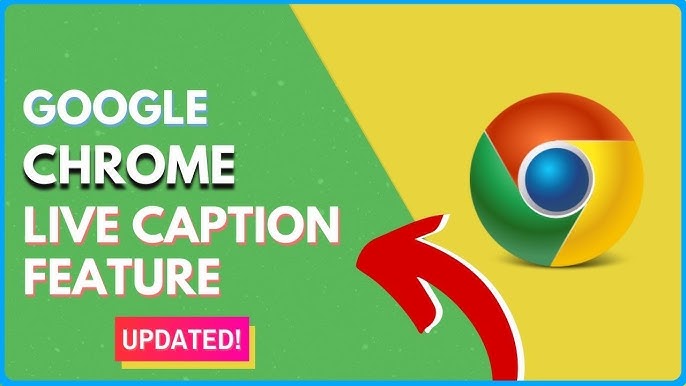Did you know that approximately 466 million people worldwide experience hearing loss? This statistic emphasizes the urgent need for accessible technology. Google Live Caption is a significant step towards inclusivity, making life easier for those who face barriers due to hearing impairments. This article will guide you through everything you need to know about using Google Live Caption in Chrome.
Understanding Google Live Caption
How Google Live Caption Works
Google Live Caption utilizes advanced speech-to-text technology to transcribe spoken language in real time. When you play audio or video, Live Caption listens and generates captions almost instantly. This technology isn’t perfect; it may struggle with complex terms or accents.
Supported Languages and Devices
Live Caption supports multiple languages, including:
- English
- Spanish
- French
- German
To use this feature, ensure your Chrome version is 78 or later. While it primarily works on desktop, it doesn’t always seamlessly translate to mobile devices.
Accuracy and Limitations
The accuracy of Live Caption is impressive but not flawless. In noisy environments or with heavy accents, captions may differ from the spoken word. Official documentation from Google indicates that while it’s continually improving, user feedback helps refine performance.
Enabling and Using Google Live Caption
Enabling Live Caption in Chrome
Follow these steps to enable Live Caption on your device:
- Open Chrome.
- Click on the three dots in the top-right corner.
- Select Settings.
- Navigate to Advanced.
- Under Accessibility, toggle on Live Caption.
Screenshots for each step can further enhance understanding.
Customizing Caption Settings
You can adjust Live Caption settings to better suit your preferences:
- Change font size
- Alter font style
- Customize caption colors
Include screenshots of customization options for visual guidance.
Using Live Caption with Different Media
Live Caption works effectively with various types of media:
- YouTube Videos: Captions activate automatically when video starts.
- Netflix Shows: Ensure captions are turned on in the video settings.
- Browser Audio: Any audio played in Chrome can be captioned.
Live Caption’s Accessibility Benefits
Enhancing Communication for the Hearing Impaired
For those with hearing loss, Google Live Caption fosters improved communication. Studies show that accessible technology increases engagement and understanding. An accessibility expert recently stated, “Tech that includes everyone isn’t just a luxury; it’s essential.”
Improving Accessibility in Educational Settings
In classrooms, Live Caption can be a game-changer. It allows students with hearing impairments or learning disabilities to follow along more easily. As online learning grows, this feature remains critical for equitable access.
Benefits Beyond Hearing Impairment
Google Live Caption is not just for those hard of hearing; it aids anyone with cognitive challenges or individuals learning new languages. Real-time captions support comprehension and retention, making learning a smoother process.
Troubleshooting Common Issues with Live Caption
Resolving Audio Playback Problems
If you encounter audio issues, check your volume settings and ensure Chrome is the active window. Sometimes, certain websites may not support captions.
Fixing Inaccurate Captions
To enhance accuracy, try these steps:
- Adjust the playback volume to a reasonable level.
- Reduce background noise.
Addressing System-Specific Errors
If Live Caption doesn’t work on your platform:
- Windows: Restart Chrome or check sound settings.
- macOS: Update Chrome to the latest version.
- Chrome OS: Ensure your accessibility settings are correctly configured.
The Future of Live Caption and Similar Technologies
Future Development and Improvements
Google constantly seeks to enhance Live Caption. Future updates may include broader language support and improved accuracy rates.
Comparison with Other Captioning Solutions
While Google Live Caption is robust, other options exist. Features from platforms like Zoom or third-party apps also offer captioning, but Google integrates this directly into Chrome, enhancing user convenience.
The Expanding Role of AI in Accessibility
AI plays a crucial role in making technology accessible. As AI improves, features like will likely evolve to become even more precise, making life easier for everyone.
Conclusion
Google Live Caption offers vital benefits for accessibility and inclusivity. From enhancing communication for the hearing impaired to supporting education and language learning, this feature is essential. Enable Live Caption today and experience the difference firsthand. Spread the word and help others discover this valuable tool for better Google Live Caption communication.
